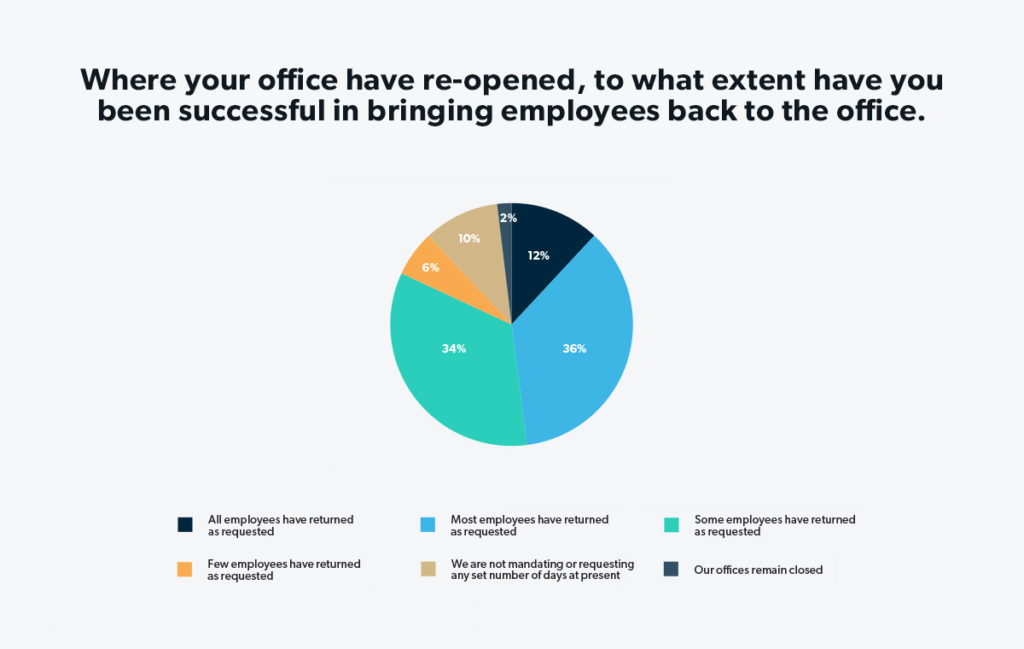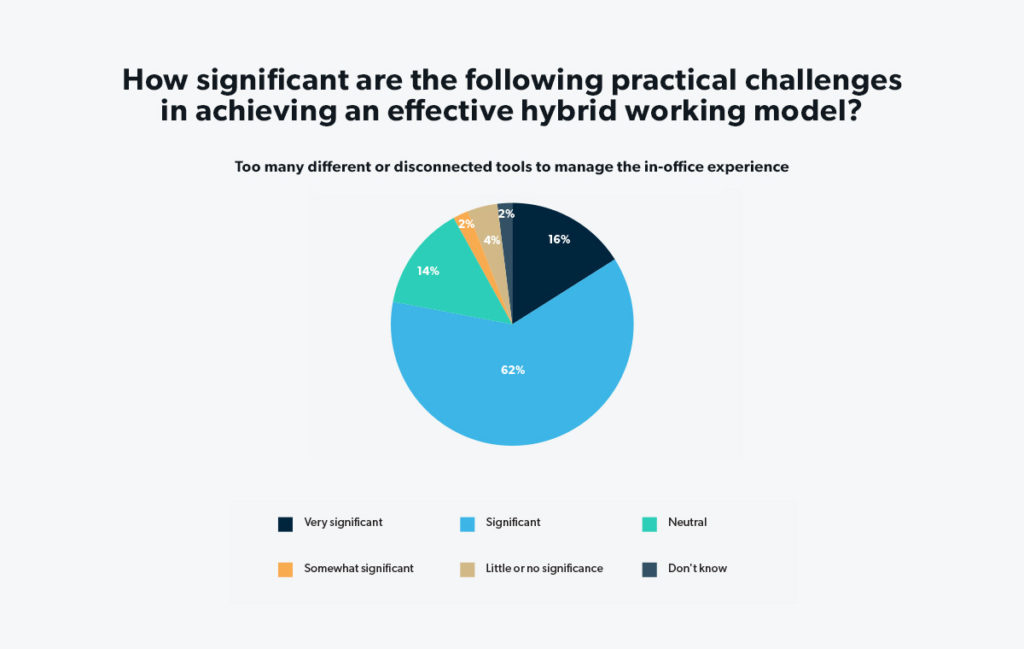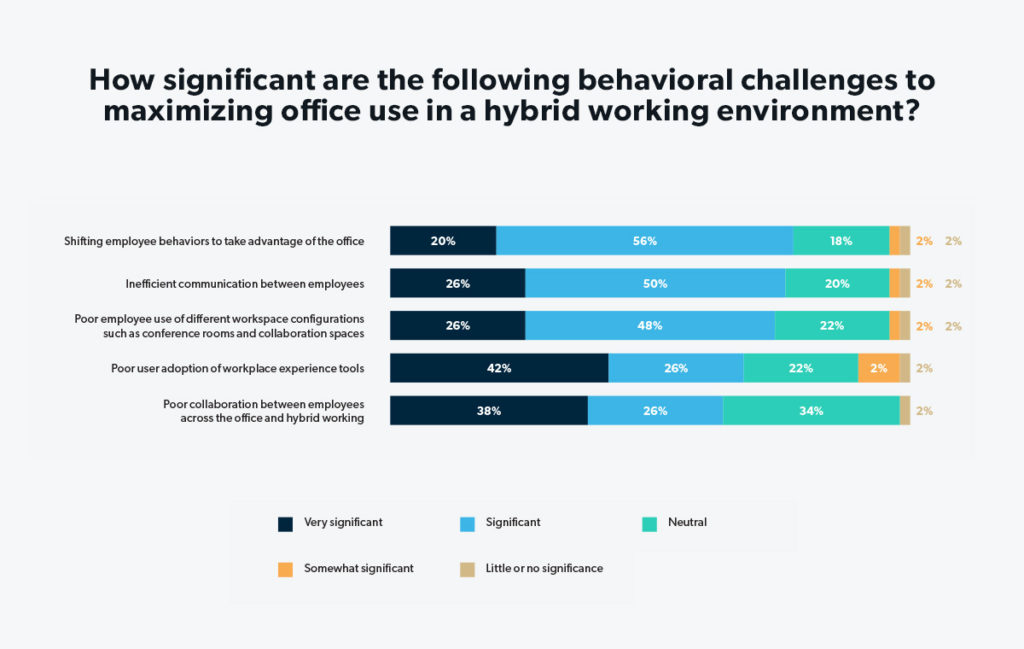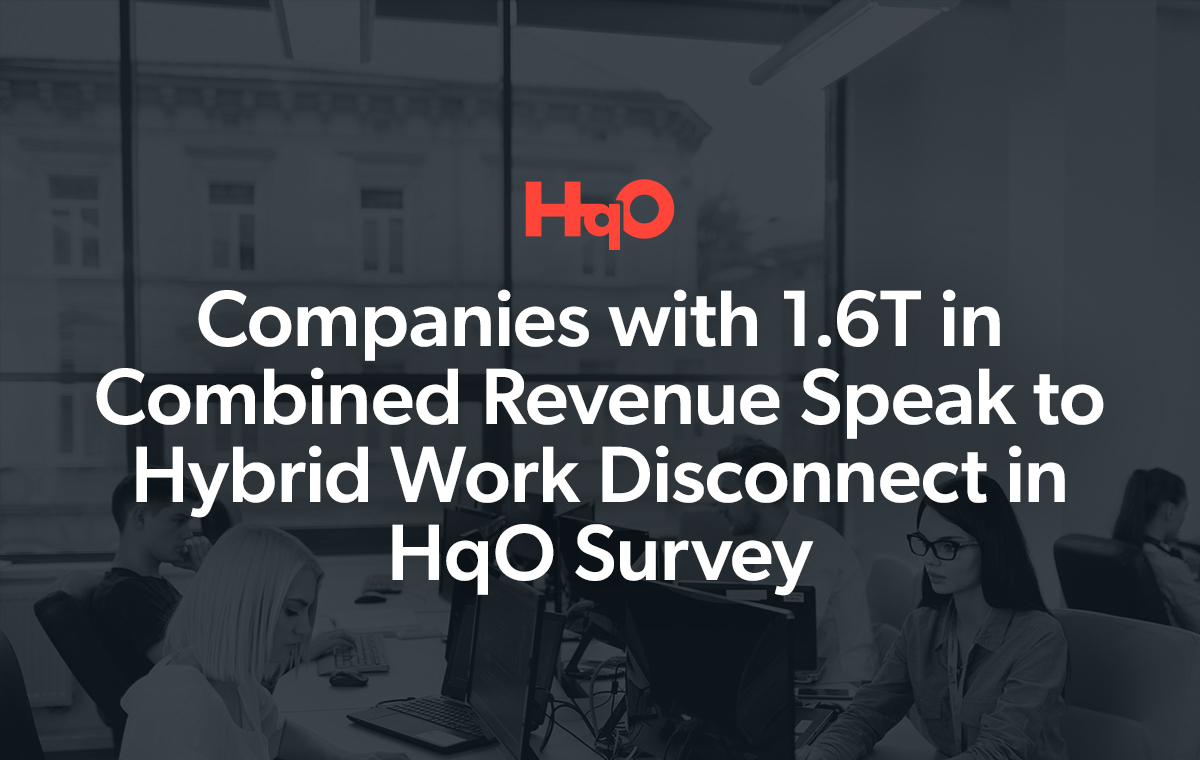Nearly 90% of employers surveyed have implemented some type of hybrid work arrangement, but overall they remain dissatisfied with how these models are working
To learn more about today’s workplace experience and emerging office trends, HqO partnered with leading research firm Verdantix to conduct exclusive interviews with executives from leading companies across the globe. We spoke with decision-makers at companies from life sciences, to legal, to financial services sectors, with a combined total of 1.6T in revenue and more than 1.5M employees. In these conversations we identified key hurdles to meeting the needs of employers and their employees. We published these findings in a new report, Office Insights 2022.
Surveyed executives were often aligned around hybrid, in-office, and remote work trends, with key focuses on employee engagement, collaboration, and behaviors emerging. Notably, the findings showed that the surplus of point solutions tools flooding the workplace creates complexity without improving outcomes.

Key findings:
- 88% of employees are in the office at least a couple of days a week; 12% have fully returned 5 days a week.
- Nearly 90% of employers have implemented some type of hybrid work arrangement, but they remain dissatisfied with how these models are working.
- 75% of employers are struggling to shift employee behaviors to maximize the benefits of the office in a hybrid working environment.
Employers across industries are aware that employees prefer hybrid work models with more than 70% of those surveyed believing employees value hybrid working as much as salary and other benefits such as healthcare.
Despite 50% of employers intending to downsize their CRE portfolios in the next two years, nearly all those surveyed have put large efforts into redesigning their workspaces and supporting flexible working models.

But, employers haven’t fully optimized hybrid or remote models just yet.
- Nearly 90% of employers find communication between employees in mixed environments to be inefficient.
- More than 50% of employers suggest that dispersed teams make it difficult to establish effective communications channels.
- More than 50% of employers find poor collaboration between employees in mixed environments.
These ongoing challenges are creating a disconnect between employers and employees at a time when employers can ill afford to lose talent in one of the tightest job markets in history.

Some of the underlying structural issues that leaders identified as barriers to an effective workplace include:
- Almost 80% of employers believe employee habits need to change in order to take proper advantage of the office.
- Nearly 80% of employers believe there are too many disconnected or disparate tools to manage the in-office experience.
And yet, more than 50% of employers see low adoption of tools, resources and services in the workplace. - 65% of those surveyed attribute this to a lack of employee awareness of available tools, and services.
Access the full report for more information, additional results, and top-line guidance on how businesses might address the issues surfaced in these interviews. Download now.



